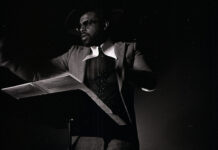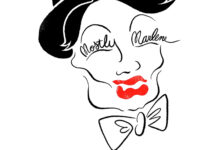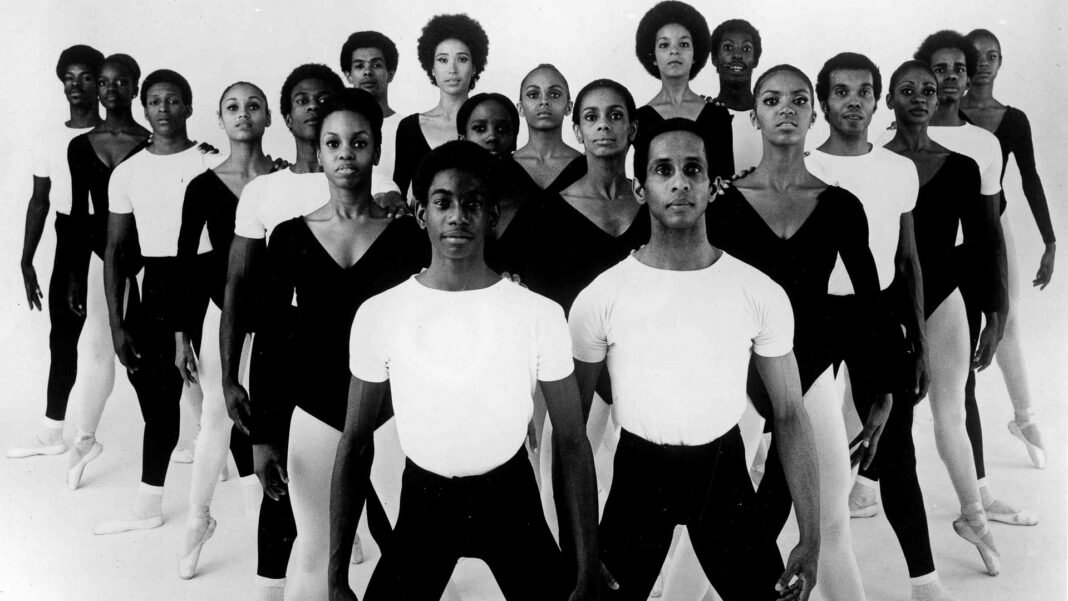On April 5th the Dance Theatre of Harlem will return to performances with a gala as part of New York City Center’s Dance Festival. This weekend they will have three more performances there. It will definitely be a celebration after the pandemic forced a postponement of live performances.
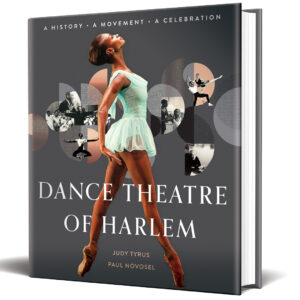
Last October the first-ever book about Dance Theatre of Harlem was released. Written by Judy Tyrus and Paul Novosel, Dance Theatre of Harlem: A History, A Movement, A Celebration documents the full history of the company. From its inception by Arthur Mitchell and Karl Shook through some incredibly challenging moments, their book captures it all. It’s filled with some of the finest dance photography from throughout its over 50 year history.
Last month I spoke via Zoom with Tyrus and Novosel about the book, their own personal histories as a former dancer and former pianist with the company and how Dance Theatre of Harlem has survived those incredible challenges. What follows are excerpts from my conversation that have been edited for length and clarity. If you want to watch the full interview (and there’s so much more to hear), please go here to our YouTube channel.
Q: I’ll start with something that that Arthur Mitchell was apparently told by George Balanchine and Lincoln Kristien that if he “took the bull by the horns” and did what he had to do, eventually “know that the world will catch up to what you’re doing and appreciate it”. Is your book a document to prove that they were right about Mitchell and by extension, Dance Theater of Harlem?
Paul Novosel: It was a bold experiment and I think what he was out to prove to things that the dancers with African heritage can do ballet and that you can build a wonderful ballet company from the community because it is community based. And I think those were the two big things. From that everything else flowed.
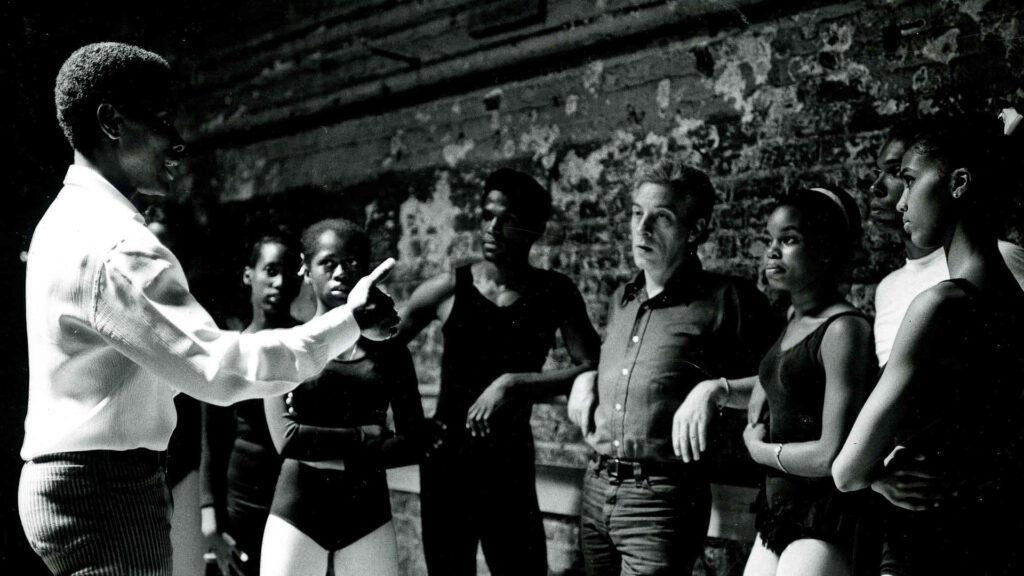
Judy Tyrus: I just think that Arthur Mitchell’s life from the very beginning was about engagement. He needed to engage with with everyone that he met in order to get better, in order to improve. Definitely without question Arthur Mitchell carried [that] over into the school and the company.
Q: The quote that starts chapter one says “What we started out to do, to prove, was that Black children – given the same opportunity as white children – could be great dancers.” I’m not trying to sound naïve about the late 60s, but that seems obvious to me. It must have seemed obvious to him as well.

Judy Tyrus: I think it was obvious to him because he was told all you have to do is work hard and you can be whatever you want to be. And so that’s what he did. He started the school with that idea that look, people, all we have to do is work hard and we’ll get there, you know? And so I think that was a very important lesson that he taught all of us the moment you stepped foot in the building.
Q: What did you want to accomplish with this book since no other books about Dance Theatre of Harlem and its history had been written?
Paul Novosel: The first meeting I had with Judy, the first question when we kicked off the whole idea was what kind of book do we want? We had these beautiful collections of photographs. We had all of the great theatrical photographers. And then Judy said to me “I want it to be fun and enjoyable.” And we wanted it to be academically sound. So all our sources are in there and we wanted to be informative and fun and enjoyable to read.
Q: Judy, to your experiences having been a dancer for as long as you were, what stands out to you most about your time dancing with Dance Theatre of Harlem?
Judy Tyrus: When I stepped in the door the very first day I remember there was this group of dancers that were all similar in age. I was 16 when I got to New York from San Francisco. I was a baby. As a baby you look towards the people that are around you to help you. And so that sense of community was really strong. At Dance Theatre every day is a learning experience and it hasn’t stopped. The thing about being a dancer is that you have to always learn something new. There’s never a day when you can just kind of float through the day. Your career is so short: we start dancing, we work really hard, we become successful and then it goes really fast.
Q: The company has historically gone through peaks and valleys, both artistically and economically. What do you believe is the reason the company survived all of those challenges?

Paul Novosel: I think the most important thing is that it’s community based, right? So if you go from that platform there is this huge community of support. There’s a huge alumni association, an association, but a huge alumni base. They were the darling company during the 70s, 80s and 90s of what they were doing because people love the fusion of the style which we talked about in the book. So that’s a recipe for success and that’s their recipe. And that’s a product and it’s sellable. It’s because of that, because it’s sellable and marketable, I think that’s why it’s survived to this day.
Judy Tyrus: We watched those peaks and valleys happening and the reaction from them. And it was never to give up, to lay down and just let go. It was always to fight. He was a fighter from the very beginning of his life. You know he had to fight just to pay for classes and to support his family. So I think that became part of the DNA of Dance Theater of Harlem to never give up and it’s a part of the performer to never give up. Always persevere. Just keep doing the work. And that’s what they did.
Main Photo: Dance Theatre of Harlem Ensemble (Courtesy Kensington Books)


